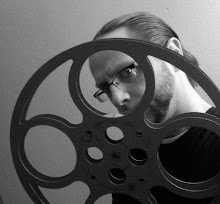Hollywood has long been a copycat business. If one studio has a hit doing sci-fi, then the rest will follow. We’ve seen this with 3D, fantasy, franchises based on books, monster movies, and connected universes. It’s a pattern that’s become predictable, yet profitable.
This year, Hollywood found a new, shiny toy: The Re-release. This year has seen many re-issues into theatres celebrating significant anniversaries. Earlier this year, STAR WARS: EPISODE III – REVENGE OF THE SITH returned to the big screen for its 20th anniversary and turned in a surprising box office result. And just like that, multiplexes are loaded with films that are anywhere from 15 to 50 to 60 years old. BLACK SWAN from 2010 returned this month for its 15th anniversary, as will JAWS in IMAX for its 50th. And later this year, we’ll be seeing big-screen comebacks for BACK TO THE FUTURE, THE BREAKAST CLUB, TOY STORY, APOLLO 13, and THE SOUND OF MUSIC. It’s become such a popular thing that STAR WARS (1977), has already been announced for a theatrical run for its 50th anniversary…two years from now in 2027.
This has been good business for studios and theatres, with the latter still battling the shadow of the mishandled pandemic and the convenience of streaming. Re-releases have been an easy way to make a few bucks; the films reputations do the selling for them. Nostalgia is a big selling point, with audiences remembering where they were 20 or 25 years ago when they first experienced these films in theatres…along with the opportunity to introduce the next generation to old favorites.
The flip side to this is newer films may struggle to find footing when they are going up against legends. Darren Aronofsky’s newest film, CAUGHT STEALING, could not secure premium IMAX screens, thanks to the return of JAWS the same weekend. Original films may struggle just like they do when they go up against remakes, but hey…a re-release is better than a lazy remake.
Re-releasing old films reminds us that the big screen is where cinema began. It delivers nostalgia and triggers strong memories, and reminds us why these films remain culturally relevant and powerful. The only mystery is why Hollywood didn’t start doing this sooner.





